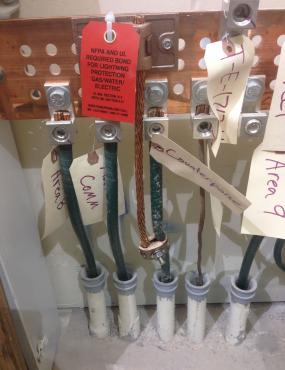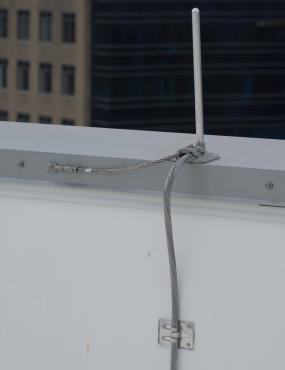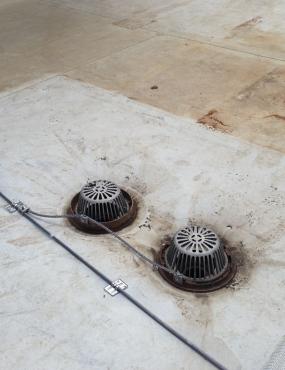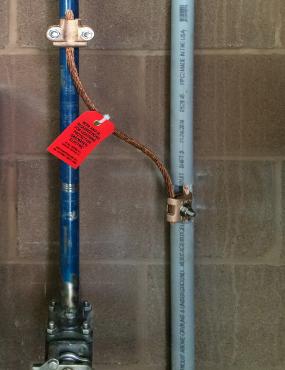Lightning Bonding Connections for Lightning Protection Systems
A variety of specifically sized lightning bonding connections and fittings are used to interconnect the lightning protection system with parts of a structure that could become electrically energized during a lightning event. Fittings such as bonding plates, bonding lugs, and pipe clamps are used to join metallic parts of the structure to the lightning protection system. These connections allow the current to travel without interruption through the structure and prevent the lightning current from arcing or side flashing off of the system and damaging the structure.
By ensuring that the electrical potential of metallic bodies on all parts of a structure rises and falls equally during a lightning event, damage can be prevented. This is achieved by making certain that metal objects in proximity to the lightning protection system, such as door tracks, gutters, soil vents, roof drains, ladders, railings and similar metal bodies are connected to the lightning protection system.
In addition to NFPA 780, there are many other NFPA codes and standards that have similar requirements for equipotential bonding. This includes:
- NFPA 54 – Fuel Gas Code
- NFPA 13 – Standard for the Installation of Sprinkler Systems
- NFPA 24 – Standard for the Installation of Private Fire Service Mains
- NFPA 70 – National Electric Code

A main sized lightning protection bonding connection is placed on the main electrical grounding bus bar.

The parapet mounted air terminal has a secondary bond to the metal coping cap to provide continuity.

The metal roof drains are bonded to the roof conductor that passes close to them.

The lightning protection down conductor (enclosed in PVC conduit on the right) is bonded to the adjacent metal plumbing pipe.
Our Partner:

visit www.sls-us.com to learn about their suite of lightning solutions for special applications

